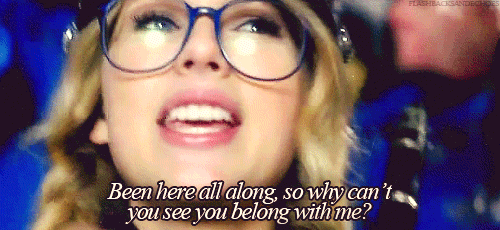Loyalty has many different meanings and associations for every single person. The first thing that comes to mind when I think of loyalty is a soldier. A soldier is one who believes in a cause he or she is fighting for, and is willing to risk their life for it. For some, loyalty may just seem like one who does not lie, cheat, or betray. Nevertheless, no matter how one defines loyalty, one must pledge complete allegiance to that person or that thing they declare loyalty towards.
After reading the Libretto of Turnadot, the character that struck a chord in me instantly was Liu. Liu was an inferior slave to Calaf, and despite their extreme class dissonance, Liu fell madly in love with him. Liu is willing to go to extreme lengths over her love for Calaf, and this is most notably shown when she gives up her life and does not reveal his name. Immediately this scene provided me with two new found respects. For one, I found a new degree of loyalty, for which Liu had to her heart. And secondly, I realized that it is only possible in such an artistic form like opera, for such dramatic scenes to take place.
The role of Liu is the new standard of real loyalty that I now hold to. Though Liu went to extreme measures, I now see that she had such dedication, commitment, and love towards something (her heart), or even someone(Calaf). I could not stop myself from thinking about the soldiers that risk their lives everyday for the safety of the country which we live in.
 Liu’s loyalty is an even greater support for the “soldier” definition which I first associated loyalty with. After delving deeper into this matter, I realized how committed these people must feel towards this nation. I realized that I truly take for granted the life I live- especially in such an amazing country- and I start to think if there is anything which I hold so much loyalty towards; especially to a degree that is portrayed in this play. Liu, and her indirect association towards the soldiers that protect our country, has inspired me to bring about some type of awareness towards such commitment. Additionally, I learned that it is extremely crucial to take one’s loyal values into important considerations. At first glance, Lui must seem like some insignificant, inferior slave in a complex story; however, after she expresses such courageous and devoted qualities, my perception of her changed dramatically. One should always develop and maintain such reputable characteristics that both Liu and all soldiers have. It is needless to say that one does not have to go to the extremes that Liu went to—but one must still take the positive practical traits that Liu exemplified, and try to apply that to his or her own life.
Liu’s loyalty is an even greater support for the “soldier” definition which I first associated loyalty with. After delving deeper into this matter, I realized how committed these people must feel towards this nation. I realized that I truly take for granted the life I live- especially in such an amazing country- and I start to think if there is anything which I hold so much loyalty towards; especially to a degree that is portrayed in this play. Liu, and her indirect association towards the soldiers that protect our country, has inspired me to bring about some type of awareness towards such commitment. Additionally, I learned that it is extremely crucial to take one’s loyal values into important considerations. At first glance, Lui must seem like some insignificant, inferior slave in a complex story; however, after she expresses such courageous and devoted qualities, my perception of her changed dramatically. One should always develop and maintain such reputable characteristics that both Liu and all soldiers have. It is needless to say that one does not have to go to the extremes that Liu went to—but one must still take the positive practical traits that Liu exemplified, and try to apply that to his or her own life.
Furthermore, to me, opera always resonated a long play of people singing in extremely loud voices, and with no real purpose. However, after reading through Turnadot, and watching the aria of “Nessun Dorma”, I realized that there is a “method to the madness” of this unique art form. Opera creates an environment containing such dramatic and expressive narratives. The music and the content in the play are usually types that could not survive, or fit, in other art forms; but opera seems as if it was made for it. Though I still have much more to explore in this art form which is so new to me, I have found a new lesson to be learned: when confronted with something that may seem unusual and convoluted, I have realized that one should always approach it with complete openness. Approaching Liu too, with complete openness, may have led me to learn more about the favorable and worthwhile character she truly proves to be.













 Side; penniless people are scattered throughout the concrete jungle. These poverty-stricken citizens are littered on the streets begging for change, digging through garbage cans, and sleeping through harsh weather conditions. What does the half that is better off do? Nothing but pass them by. I myself am guilty of this. While sparing a dollar to every homeless person I see is not possible, I wish that I had more sympathy when I ignored them all those times to avoid being late for class.
Side; penniless people are scattered throughout the concrete jungle. These poverty-stricken citizens are littered on the streets begging for change, digging through garbage cans, and sleeping through harsh weather conditions. What does the half that is better off do? Nothing but pass them by. I myself am guilty of this. While sparing a dollar to every homeless person I see is not possible, I wish that I had more sympathy when I ignored them all those times to avoid being late for class. hours about 100 of his slides. He later titled these lectures “How the Other Half Lives and Dies,” to show just how gruesome this way of life was. But 1890 isn’t so far off from 2015, because poor
hours about 100 of his slides. He later titled these lectures “How the Other Half Lives and Dies,” to show just how gruesome this way of life was. But 1890 isn’t so far off from 2015, because poor So while I sit here typing this blog post on my free computer, to be submitted for a grade at my prestigious university, someone else sleeps on the streets, waiting for enough change to purchase McDonalds’s. Jacob Riis’ photos are truly shocking, but they’re just art to the better half. To the “other half,” these photos are a reality.
So while I sit here typing this blog post on my free computer, to be submitted for a grade at my prestigious university, someone else sleeps on the streets, waiting for enough change to purchase McDonalds’s. Jacob Riis’ photos are truly shocking, but they’re just art to the better half. To the “other half,” these photos are a reality.

 Immigrating to a new country can often times be difficult, frustrating, and confusing. The language is foreign, the customs are strange, and even every-day products are different. Without sacrificing some of your previous cultural values and beliefs, it will be difficult to assimilate into the new society. As sad as this process may be, its hardships provide great artistic inspiration for artists such as Zhang Hongtu.
Immigrating to a new country can often times be difficult, frustrating, and confusing. The language is foreign, the customs are strange, and even every-day products are different. Without sacrificing some of your previous cultural values and beliefs, it will be difficult to assimilate into the new society. As sad as this process may be, its hardships provide great artistic inspiration for artists such as Zhang Hongtu. Hongtu’s satirical goal. In this work, Hongtu took an empty Quaker Oats container and painted Mao’s face onto it with a red backdrop. The red background as well as the green hat with a star is symbolic of communism. Quaker Oat’s is one of America’s largest companies. By painting a communist symbol on an American product, Hongtu creates a paradox. It is so absurd that at first glance, I couldn’t help but laugh a bit. Putting the political context aside for a moment, the work also represents a culture clash. Instead of the typical old white male, Hongtu’s Quaker Oats box features a Chinese male. This difference prompts the viewer to question what exactly makes an American, and whether or not that characterization is based upon race.
Hongtu’s satirical goal. In this work, Hongtu took an empty Quaker Oats container and painted Mao’s face onto it with a red backdrop. The red background as well as the green hat with a star is symbolic of communism. Quaker Oat’s is one of America’s largest companies. By painting a communist symbol on an American product, Hongtu creates a paradox. It is so absurd that at first glance, I couldn’t help but laugh a bit. Putting the political context aside for a moment, the work also represents a culture clash. Instead of the typical old white male, Hongtu’s Quaker Oats box features a Chinese male. This difference prompts the viewer to question what exactly makes an American, and whether or not that characterization is based upon race.






Recent Comments